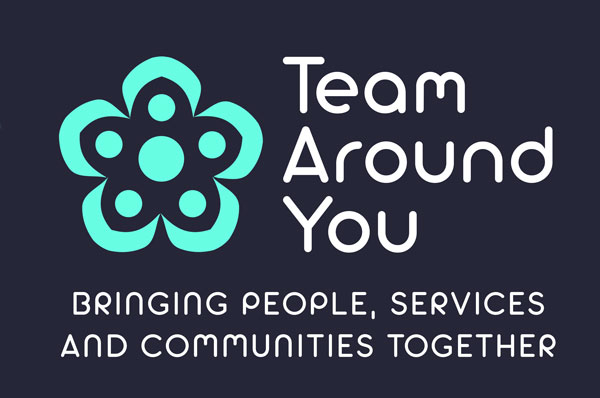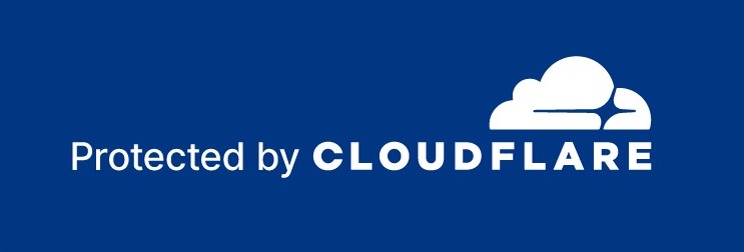Missing Child
Definitions for children missing from home
Children
When Sparks Fostering refers to ‘children’, it includes young people up to the age of 18.
Missing
Children whose whereabouts cannot be established and where the circumstances are out of character, or the context suggests the person may be the subject of crime or at risk of harm to themselves or others.
Absent
A person not at a place where they are expected or required to be and where the circumstances and context suggest there is a lower level of risk.
Away from placement without authorisation
A looked after child whose whereabouts is known but who is not at their placement or place they are expected to be and the carer has concerns or the incident has been notified to the local authority or the police. These children would not be treated as either ‘missing’ nor ‘absent’ under police definitions as their whereabouts is known even though it may be a cause for concern.
Out of area placements
When a child is placed out of their local authority area, the child’s social worker will make sure that the child has access to the services they need. Notification of the placement will be made (by the children’s social worker) to the host authority and other specified services. The processes followed by Sparks Fostering are in line with local/host Runaway and Missing From Home or Care protocols.
Why children in our care go missing
Children may be missing or absent for a few minutes or much longer (several days or weeks etc.). Regardless of how long children are missing, foster carers are expected to notify the child’s social worker and the Sparks Fostering social worker immediately.
Examples of push factors which may lead to children running away from a problem include:
- Problems at home: including long-term abuse or maltreatment or living in neglectful situations.
- Family break-up: Young people being drawn into their parents conflicts.
- Mental and emotional health problems: A disproportionate number of young people who run away from home have a mental health problem.
- Problems at school: Including relationships with teachers or other pupils or ceasing to attend due to exclusion or withdrawal by parent or removal from roll with no named destination.
- Bullying: Children who are being bullied are more likely to run away.
- Teenage pregnancy: Some young women run away or are forced to leave home because they become pregnant (or fear that they may be pregnant).
Examples of pull factors which may lead to children running away to a problem include:
- Running to be near family or friends: Especially when a child is in care and there are problems in contact arrangements with family and friends.
- Grooming for potential sexual exploitation or child trafficking: A child may be coerced to go missing by someone who has power or control over them and seeks to exploit them.
- Criminality/Exploitation: This includes the enticement of material gain as well as threats to themselves or family members.
- Stage of development: This includes at times a young person’s desire for autonomy or lack of understanding of risk and awareness of consequences.
The risks to children who are missing
It is thought that approximately 25 per cent of children and young people that go missing are at risk of serious harm. There are particular concerns about the links between children running away and the risks of sexual exploitation. Missing children may also be vulnerable to other forms of exploitation, to violent crime, gang exploitation, or to drug and alcohol misuse.
Looked after children who may have been trafficked from abroad
Some looked after children are unaccompanied asylum seeking children or other migrant children. Some of these children may have been trafficked into the UK and may remain under the influence of their traffickers even while they are looked after.
Trafficked children are at high risk of going missing, with most going missing within one week of becoming looked after and many within 48 hours. Unaccompanied migrant or asylum seeking children who go missing immediately after becoming looked after should be treated as potential victims of trafficking.
The assessment of need to inform the care plan will be particularly critical in these circumstances and should be completed immediately, as the window for intervention is very narrow. The assessment should seek to establish:
- Relevant details about the child’s background before they came to the UK.
- An understanding of the reasons why the child came to the UK.
- An analysis of the child’s vulnerability to remaining under the influence of traffickers.
In conducting this assessment, it will be necessary for the local authority to work in close cooperation with the UK Human Trafficking Centre (UKHTC) and immigration staff familiar with patterns of trafficking into the UK. Immigration staff who specialise in trafficking issues should be able to advise on whether information about the individual child suggests that they fit the profile of a potentially trafficked child.
Provision may need to be made for the child to be in a safe place before any assessment takes place and for the possibility that they may not be able to disclose full information about their circumstances immediately.
Foster carers should not divulge the location of the child to any enquirers and if asked, they should redirect enquiries to the child’s social worker, who will establish the enquirer’s identity and relationship to the child, if necessary with the help of police and immigration services. In these situations, the roles and responsibilities of care providers must be fully understood and recorded in the placement plan.
Proportionate safety measures that keep the child safe and take into account their best interests should also be put in place to safeguard the child from going missing from care or from being re-trafficked.
It is essential that the local authority continues to share information with the police and immigration staff, concerning potential crimes against the child, the risk to other children, or other relevant immigration matters.
‘Safeguarding Children Who May Have Been Trafficked’ (HM Government, 2011) contains practical guidance. Where it is suspected that a child has been trafficked, they should be referred by the child’s social worker into the UK’s victim identification framework, the National Referral Mechanism (NRM). The Trafficked Children Toolkit (London Safeguarding Children Board) has been made available to all local authorities to help professionals assess the needs of these children and to refer them to the NRM.
NSPCC Child Trafficking Advice Centre provides specialist advice and information to professionals who have concerns that a child may have been trafficked. NSPCC has also produced a guide for children to explain the work of the Trafficking Centre
Reducing the risk of the children in our care running away
If it is known at the point of matching that the child is at risk of running away, attempts will be made to find an appropriate foster home which could help to minimise the risk of the child running away. The care plan should include details of the arrangements that will need to be in place to keep the child safe and minimise the risk of the child going missing from their foster home.
Any decision to place a child at distance should be based on an assessment of the child’s needs including their need to be effectively safeguarded. Evidence suggests that distance from home, family and friends is a key factor for looked after children running away.
Listening to the child is an important factor in protecting and minimising the chances of a child running away. The Children’s Rights Director (2012) reported that “one of the major influences of them running away is having a sense that they are not being listened to and taken seriously”, particularly about placement decisions and moves. All looked after children should be informed about their right to be supported by an independent advocate.
Care planning, placement planning and reviews
Care plans should include a detailed assessment of the child’s needs, including the need for the provision of an appropriate placement that offers protection from harm. Where a child goes missing from a placement, a statutory review of their care plan (arranged by the child’s social worker) provides an opportunity to check that it addresses the reasons for an absence . The review should result in the development of a strategy to minimise a repeat of the missing episode. In particular, any issues relating to the vulnerability of the child to sexual exploitation, trafficking or criminal or gang involvement should be identified. Actions to address these needs and ensure the child is kept safe should be clearly set out in the care plan. The police and other relevant agencies should be given the opportunity to contribute to the review.
Where a child already has an established pattern of running away, the care plan should include a strategy to keep them safe and minimise the likelihood of the child running away in the future. This should be discussed and agreed as far as possible with the child and the child’s carers and should include detailed information about the responsibilities of all services, the child’s parents and other adults involved in the family network.
The child’s social worker will inform the Independent Reviewing Officers (IROs) about missing and away from placement without authorisation episodes and they should address these in statutory reviews.
The risk assessment and care/placement plan should cover the following information:
- Trigger points for absence or missing episodes
- Risks to themselves, the public or the carer before, during or after a missing episode including when being picked up
- What steps can be taken to reduce the likelihood of the child going missing and coming to any harm or harming others
- Friends and family details and contact numbers as well as addresses commonly found at
- Expectations of the young person
- At which point the Police will be notified, what processes will follow an incident, who will collect a child if they are missing, details of who conducts immediate assessments on their return and arrangements for full return interviews etc.
- Agreements around rules for staying overnight at a friend’s houses or going on trips. This is frequently cited as a major issue by young people who wish to behave like their peers who are not Looked After. Decision on overnight stays should normally be delegated to foster carers. Arrangements for such decisions should be written into the Placement Plan or equivalent. There is no statutory duty for DBS checks to be carried out on adults in a private household where a child/young person may stay overnight and so restrictions should only be placed on Looked After Children if there are exceptional reasons.
- If it is suspected that a child may go missing, the foster carer should help the child to understand why going missing may affect them negatively; it is important that the child feels heard and understood and that the child understands that the foster carers and the team around the child are working together for the benefit of the child.
Sparks Fostering recordings
Foster carers and Sparks Fostering social workers are required to keep comprehensive records of any incidents or interactions which may indicate a risk of a child going missing or any missing/absent episodes. Foster carers and their supervising (Sparks Fostering) social worker work together to update these documents and the documents should be shared with the children’s social worker.
Reacting to a child who is leaving the placement
Foster carers are expected to adhere to the behaviour management policy when responding to children who are at risk of (or in the process of) leaving the home or supervision of the foster carers. It should be noted that foster carers cannot physically intervene when children aim to leave the fostering placement – foster carers should talk with the child and try to help the child to understand why leaving the placement is likely to have adverse impact on the child. The only instance in which a foster carer may physically intervene in restraining or limiting the movement of children in our care is if the child is in immediate physical harm or is causing harm to others.
Foster carer should notify the children’s social worker and the Sparks Fostering social worker as soon as the foster carer becomes aware that the child is about to (or already has) left the placement. The foster carer is expected to follow the child if it is safe and possible to do so – the foster carer should keep the children’s social worker apprised of the child’s position so that advice can be given and staff support can join the foster carer as soon as possible. The children’s social worker will advise the foster carer if police are to be notified.
When it’s suspected that a child may be missing
Before reporting that a child is missing the foster carer is expected to take steps which include:
- Physical checks of the foster carer’s home or where the child is supposed to be, including any location the person may be hiding within the home/building.
- Physical checks of any garden, garage, sheds, grounds and surrounding areas.
- Attempting to contact the child directly, via mobile phone, text or social networking sites (i.e. Twitter/Facebook etc.).
- Contacting others who the foster carer is in touch with and who the child may have made contact with (e.g. friends).
If the child is located through such enquiries, they should not be reported as missing to the police unless there are significant safety issues with the child being there. If there are concerns, the foster carer would notify the child’s social worker immediately, who will arrange for the police to carry out a ‘Concern for Welfare’ address check.
If a child is located but is reluctant to return, the police may be requested to assist in their safe return, however, the child must not be reported as missing simply to facilitate involvement of the police in their return or as a behavioural tool.
Risk assessment following a child going missing
When children in our care are absent or missing, the children’s social worker will decide whether there is a need to notify the police. The police will prioritise all incidents of children categorised as ‘missing’ from home or care as medium or high risk. Where a child is categorised as ‘absent’, the details will be recorded by the police, who will also agree review times and any on-going actions with child’s family, carer or responsible authority.
A missing child incident would be prioritised as high risk where:
- The risk posed is immediate and there are substantial grounds for believing that the child in in danger through their own vulnerability; or
- The child may have been the victim of serious crime; or
- The risk posed is immediate and there are substantial grounds for believing that the public is in danger.
The high-risk category requires the immediate deployment of police resources. If this happens, the children’s social worker will be responsible for liaising with the police and the children’s social worker will keep the foster carer and Sparks Fostering social worker apprised of any developments.
If the situation is categorised as medium-risk, the children’s social worker and police will formulate a strategy and will direct the foster carer and Sparks Fostering staff regarding next steps.
When a child is found
When a missing child is located, it is the responsibility of he foster carers to collect the child, unless the circumstances pose a risk to the foster carer. It should be noted, however, that if the child is subject to section 20 arrangements (when birth parents give voluntary consent to place the child into foster care), parental responsibility remains with the birth family, so if the child has returned to them, social care has no legal authority to return the child to foster home (but steps can be taken by the local authority to obtain PR and/or emergency removal of the child if needed).
The attitude of foster carers and professionals such as police officers and social workers, towards a child who has been missing can have a big impact on how they will engage with subsequent investigations and protection planning. However “streetwise” they may appear, they are children and may be extremely vulnerable to multiple risks. A supportive approach, actively listening and responding to a child’s needs, will have a greater chance of preventing the child from going missing again and safeguarding them against other risks.
Any conversations that the foster carers have with the children about being missing or absent should be written down by the foster carer and shared with the children’s social worker and the Sparks Fostering social worker.
Safe and well checks
Safe and well checks are carried out by the police as soon as possible after a child reported as missing has been found. Their purpose is to check for any indications that the child has suffered harm, where and with whom they have been, and to give them an opportunity to disclose any offending by or against them.
Where a child goes missing frequently, it may not be practicable for the police to see them every time they return. In these cases a reasonable decision should be taken in agreement between the police and the child’s social worker (or parent if they still hold full parental responsibility) with regard to the frequency of such checks bearing in mind the established link between frequent missing episodes and serious harm, which could include gang involvement, forced marriage, bullying or sexual exploitation.
Independent return interviews
When a child returns to the fostering home, they must be offered an independent return interview: Independent return interviews provide an opportunity to uncover information that can help protect children from the risk of going missing again, from risks they may have been exposed to while missing or from risk factors in their home. This will be organised by the child’s social worker. The foster carer and Sparks Fostering staff will prompt the children’s social worker if this isn’t offered to the child.
The interview should be carried out within 72 hours of the child returning to their home or care setting. This should be an in-depth interview and is normally best carried out by an independent person (i.e. someone not involved in caring for the child) who is trained to carry out these interviews and is able to follow-up any actions that emerge. Children sometimes need to build up trust with a person before they will discuss in depth the reasons why they ran away.
The interview and actions that follow from it should:
- Identify and deal with any harm the child has suffered, including harm that might not have already been disclosed as part of the ‘safe and well check’ – either before they ran away or whilst missing.
- Understand and try to address the reasons why the child ran away.
- Help the child feel safe and understand that they have options to prevent repeat instances of them running away.
- Provide them with information on how to stay safe if they choose to run away again, including helpline numbers.
The interview should be held in a neutral place where the child feels safe. The interview provides an opportunity to hear from the child about why they went missing to and to understand the risks and issues faced by the child while missing. This could include exploring issues where a child:
- Has been reported missing on two or more occasions.
- Is frequently away from placement (or their home) without authorisation.
- Has been hurt or harmed while they have missing.
- Is at known or suspected risk of sexual exploitation or trafficking.
- Is at known or suspected risk of involvement in criminal activity or drugs.
- Has contact with people posing risk to children.
- Has been engaged (or is believed to have engaged) in criminal activities while missing.
The assessment of whether a child might run away again should be based on information about:
- Their individual circumstances, including family circumstances.
- Their motivation for running away.
- Their potential destinations and associates.
- Their recent patter of absences.
- The circumstances in which the child was found or returned.
- Their individual characteristics and risk factors such as whether a child has learning difficulties, mental health issues, depression and other vulnerabilities.
Following the safe and well check and independent return interview, the child’s social worker, police, foster carer and Sparks Fostering social worker should work together:
- To build up a comprehensive picture of why the child went missing
- To understand what happened while they were missing
- To understand who they were with when they were missing and where they were found and
- What support they require upon returning to home or their care placement in accordance with ‘Working Together’ guidance.
Safe and well checks and independent return interviews provide an opportunity to inform case planning, for wider strategic planning and for professionals to take into account children’s views. The outcomes of the checks and interviews should therefore be recorded on case files so that they can be shared with professionals.
Foster carers, birth family and others involved in the care of the child will also be offered the opportunity to provide any relevant information and intelligence of which they may be aware. This should help to prevent further instances of the child running away and identify early the support needed for them.
Points to note
The Ofsted report ‘Missing Children’ (2013) on local authorities’ work in relation to children missing from home and care highlighted a number of concerns. These were that:
- Risk management plans for individual looked after children were often not developed or acted on;
- Placement instability was a key feature of looked after children who ran away;
- Reports about looked after children missing from their care placement were not routinely provided to senior managers in local authorities; and
- There was little evidence that safe and well checks or interviews were taking place.
Sparks Fostering staff and foster carers pay particular aspects of the care of children by ensuring:
- Risk management plans are reviewed at least every 6 months, or whenever there are any changes to the child’s risk. Risk management plans have a good amount of useful information and clear plans about how the risks are to be managed (including who will carry out the actions and by when).
- Foster carers report any placement instability (when the child is unsettled) to the child’s social worker and the supervising (Sparks Fostering) social worker, who will work with the foster carer and child to create a plan of support for the child and foster carer/s.
- Sparks foster carers will ensure that they update their recordings in a timely manner and the Sparks Fostering social worker will ensure that the documents are shared with Sparks Fostering senior managers and the local authority social worker.
- Sparks Fostering social workers and foster carers prompt the local authority social worker to coordinate safe and well checks or interviews.
Sparks Fostering Safeguarding Lead
Tay Jiva MBE is the Safeguarding Lead (and Registered Manager) for Sparks Fostering. As such, Tay is notified (by the supervising social worker) of any children’s absences or missing from care episodes. Tay notifies Ofsted of any episodes of children being missing from care, and Tay will also have oversight of the subsequent care of the child to ensure that the guidance in this policy is followed. Tay will collate information across the organisation about missing from care episodes and she will use this information to improve agency-wide learning. If Tay is not available, the Responsible Individual and Agency Decision Maker must be notified.
Additional resources (optional)
Centring the child and working with their family network as part of return interviews. Service offered by ‘Missing People’.
When a child goes missing from care; a flowchart by the Department for Education
Runaway teens (guidance from ‘Family Lives’)







